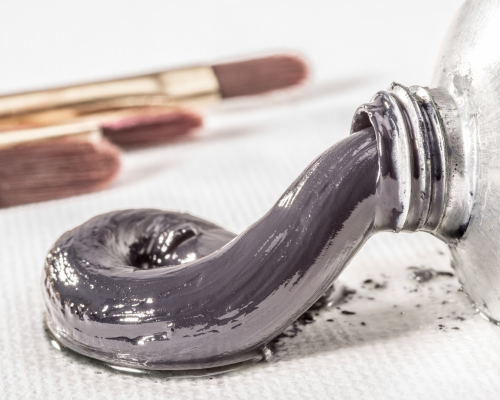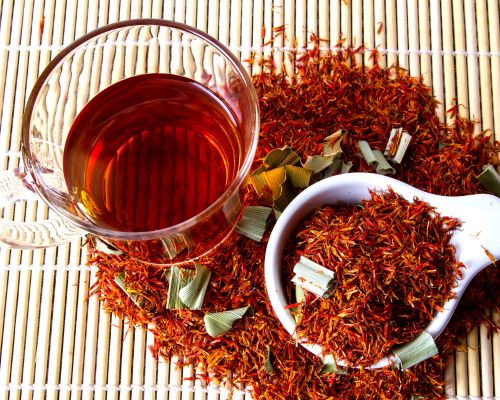Oil Painting Mediums: A Beginner’s Guide For Artists
Oil painting mediums are a timeless artistic technique that has been cherished for centuries. What lends oil painting its unique appeal is not just the vibrant colors and rich textures, but also the array of mediums artists use to manipulate and enhance the characteristics of the paint.
These mediums play a big role in shaping the consistency, drying time, and overall handling of the paint, allowing artists to explore various expressive possibilities.
Artists often turn to different mediums to modify the properties of the paint and achieve specific effects. Such mediums act as additives, influencing transparency, gloss, texture, and drying time. As artists delve into the world of oil painting, understanding the diverse array of mediums available empowers them to unleash their creativity and bring their visions to life on the canvas.
From classic mediums like turpentine and linseed oil to modern innovations like alkyd gels and drying accelerators, each substance imparts its unique characteristics to the paint. Some mediums facilitate glazing, allowing for transparent layers that enhance depth, while others alter the viscosity of the paint, enabling impasto techniques and textured surfaces.
The choice of medium depends on the artist’s desired outcome, style, and personal preferences. In this article, I’ll share everything you must know before starting to work with oil mediums.
Let’s get to the topic, shall we?
Recommended Read:
Why Should Artists Use An Oil Paint Medium?

There are many reasons to use an oil paint medium while creating any artwork of your choice. Have a look at the essential ones:
- Rich Color And Texture: Oil paint produces vibrant colors with a depth and luminosity that is often unparalleled. The slow drying time allows for blending and layering, enabling artists to achieve subtle transitions and textures that contribute to the overall visual impact of the artwork.
- Versatility: Oil painting offers remarkable versatility, accommodating various styles and techniques. Artists can work with thin glazes for translucent effects, build up impasto layers for texture, or use a combination of both. The flexibility of oil paint allows artists to adapt their approach based on the desired aesthetic and emotional impact.
- Layering and Glazing: Oil paint’s ability to be layered and glazed contributes to the creation of depth in paintings. You can build up multiple layers, allowing light to interact with the pigments in complex ways. Glazing, in particular, involves applying transparent layers, intensifying colors, and adding a luminous quality to the artwork.
- Wide Range of Mediums: The availability of a diverse range of oil painting mediums further enhances the artist’s toolkit. Mediums like linseed oil, turpentine, and alkyd gels let artists modify the consistency, drying time, and texture of the paint, providing a means to achieve specific effects and tailor the painting process to individual preferences.
Oil Painting Mediums For Beginners
As you already know, oil painting mediums are substances that artists mix with their oil paints to alter the paint’s characteristics. These mediums can influence factors such as drying time, consistency, transparency, and texture. Here are some of the most commonly used oil painting mediums:
Linseed Oil
- Characteristics: Linseed oil is one of the most traditional and widely used oil painting mediums. It comes from the flaxseed and is known for its slow drying time.
- Effects: Increases the flow and transparency of the paint, enhances color vibrancy, and promotes a glossy finish.
- Types: Refined and cold-pressed linseed oil are common variants, with cold-pressed having a slightly faster drying time.
Stand Oil
- Characteristics: Stand oil is a thicker, more viscous form of linseed oil that has been polymerized to increase its drying time.
- Effects: Improves flow and leveling, increases gloss, and accelerates drying time compared to regular linseed oil.
Turpentine (Or Mineral Spirits)

- Characteristics: Turpentine is a solvent that thins oil paint, making it more fluid. It evaporates faster than linseed oil.
- Effects: Thins paint, accelerates drying time, and is often used for cleaning brushes. It can be irritating to some artists, so odorless mineral spirits are sometimes preferred.
Damar Varnish
- Characteristics: Damar varnish is a natural resin obtained from the damar tree. It is available in solid crystals or pre-dissolved in a solvent.
- Effects: Used as a final varnish, it imparts a glossy finish to the painting, enhances colors, and provides protection. You should apply it once the painting is fully dry.
Retouch Varnish
- Characteristics: Similar to damar varnish but formulated to be removable. It is used during the painting process to unify the painting surface and bring out colors.
- Effects: Provides a temporary gloss, helping artists see the true colors and values of their painting while working.
Alkyd Mediums
- Characteristics: Alkyd mediums are synthetic resins that mimic the properties of natural oils.
- Effects: Accelerate drying time, increase gloss, and maintain flexibility in the paint film. Alkyd mediums are popular for artists who want the benefits of oil paint with a faster drying time.
Beeswax (Encaustic Medium)
- Characteristics: Beeswax is mixed with damar resin to create an encaustic medium.
- Effects: Used in encaustic painting, where the paint is heated and applied in a molten state. This technique produces a unique, textured surface.
Cold Wax Medium
- Characteristics: Cold wax medium is a mixture of beeswax and solvent.
- Effects: Adds a matte finish and a thicker, more paste-like consistency to the paint. It is often used for creating texture and impasto effects.
Oil Painting Gel And Paste Mediums
- Characteristics: Gel and paste mediums are thickeners made from a combination of oil and resin.
- Effects: Increase body and texture of the paint, allowing for impasto techniques. They come in various viscosities, providing artists with options for creating different textures.
Solvents
Solvents are an essential component in most oil painting mediums as they are used to thin the paint, clean brushes, and adjust the consistency of the medium. Here are some commonly used solvents in oil painting:
1) Odorless Mineral Spirits
- Characteristics: This is a refined and less odorous version of traditional mineral spirits.
- Effects: Functions similarly to turpentine but with reduced odor. It is a popular choice for artists who are sensitive to the strong smell of traditional solvents.
2) Gamsol
- Characteristics: Gamsol is a brand name for odorless mineral spirits produced by Gamblin.
- Effects: A low-odor solvent that works well for thinning paint, cleaning brushes, and creating washes. It is considered safer for artists who are concerned about the potential health effects of solvents.
3) Rectified Turpentine
- Characteristics: Rectified turpentine is a purified form of turpentine with some impurities removed.
- Effects: Similar to turpentine, it thins paint and aids in brush cleaning. It may have a slightly milder odor than standard turpentine.
4) Citrus Solvent
- Characteristics: Citrus solvent is an eco-friendly alternative made from citrus peels.
- Effects: Functions as a solvent for oil paint, providing a natural and less toxic option. It has a pleasant citrus aroma.
5) Safflower Oil

- Characteristics: While not a solvent, safflower oil can be used to clean brushes and thin paint.
- Effects: Has a milder odor compared to traditional solvents. It is often used by artists who prefer a more natural and less toxic alternative.
6) Lavender Spike Oil
- Characteristics: Derived from lavender plants, spike oil is an aromatic solvent.
- Effects: Used to thin paint and clean brushes, it has a pleasant lavender scent. Some artists choose it for its more agreeable odor compared to traditional solvents.
7) Walnut Oil
- Characteristics: Walnut oil is not a solvent in the traditional sense, but it can be used to thin paint.
- Effects: Acts as a medium and solvent, providing a slow-drying option with a mild, nutty aroma. It is often chosen for its non-toxic nature.
Oil Painting Mediums FAQs
What Medium Is Best For Oil Painting?
By all means, the best medium for an oil painting is the linseed oil.
Linseed oil enhances color vibrancy, provides a glossy finish, and has a slow drying time.
Can I Oil Paint Without Medium?
Yes, you can certainly oil paint without using any medium. Oil paint can be applied directly to the canvas without the addition of any medium, and many artists choose to work in this way.
Using oil paint without a medium gives you a direct and unaltered connection with the paint, and most artists appreciate the richness and texture achievable without additives. However, experimenting with different mediums can provide additional effects and alter the behavior of the paint, allowing for greater versatility in your artistic practice.
Can You Use Water As A Medium For Oil Paint?
Considering water and oil don’t mix, adding water to your oil paint will not make it thinner as it will with acrylic paint.
Subsequently, you should avoid using water and oils simultaneously.
Oil Painting Mediums: Final Say
Ultimately, the best medium for oil painting is subjective and depends on the artist’s preferences and the desired effects for a particular artwork.
Most artists find it beneficial to experiment with different mediums to discover which ones align with their creative vision and working style.
What questions do you have about this topic? Is there something you don’t understand?
Let me know in the comments section below!
I have a 16 once bottle of lavender not lavendin. It is not getting used, can I use it in my refined walnut oil for painting or does it have to be lavendin
I feel like they are getting wasted.
I don’t know how much lavender to add to the walnut. If you know I would appreciate knowing. I usually use a Gambling Galkyd gel that I have become allergic to. Thanks for any help you can give me.
I suggest sticking to the lavendin, Avril – it will work better.
I have never mixed lavender and walnut so I can’t help on that matter. Doing some research will probably give you more answers.
Hope that helps!